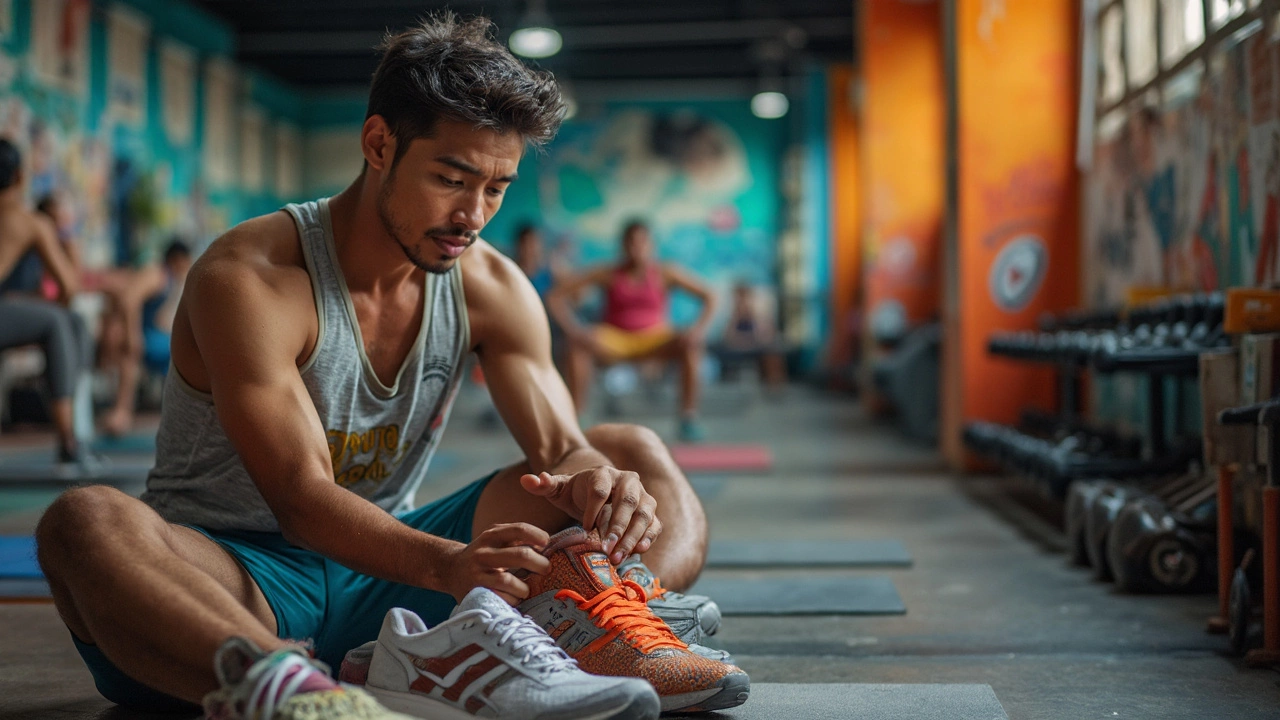Workout Shoes – Choose the Right Pair for Every Exercise
When you slip on the wrong shoes, a good workout can turn into a painful session. The right workout shoes give you support, grip, and comfort so you can focus on the move, not the ache. Below you’ll learn the basics of picking shoes that match your training style, budget, and foot shape.
What Types of Workout Shoes Exist?
Running shoes are built for forward motion. They have cushioned midsoles, breathable uppers, and a toe‑spring that helps you roll forward. If you spend most of your time on the track, a dedicated running shoe will protect your joints.
Training shoes (also called cross‑training shoes) are all‑rounders. They provide moderate cushioning, a stable base, and a flexible sidewall that lets you climb, jump, or lift. They’re perfect for HIIT classes, circuit gyms, or any mix of cardio and strength work.
Weight‑lifting shoes focus on stability. A raised heel and a firm, non‑compressible sole keep your spine aligned during squats and deadlifts. If lifting heavy is your main goal, these shoes can add a few extra reps.
Minimalist or barefoot shoes have very little padding and a thin sole. They let your foot move naturally and are popular for sprint drills or foot‑strengthening work. They’re not for everyone, especially if you have a history of joint pain.
How to Pick the Perfect Pair
Start with the fit. Your shoe should hug the midfoot without pinching, leave about a thumb’s width at the toe, and feel snug around the heel. Try them on later in the day when your feet are slightly swollen – that’s when they’ll feel most like they’ll feel during a workout.
Next, think about cushioning vs. stability. If you run long distances, you’ll want more cushioning to absorb impact. If you lift or do a lot of lateral moves, a firmer sole gives you a stable platform.Breathability matters too. Mesh uppers keep feet cool and reduce sweat buildup, which helps avoid blisters. For outdoor training in wet weather, look for water‑resistant overlays.
Budget is a simple filter. High‑end shoes often add advanced foam tech or premium leather, but many mid‑range models give you the same support for less money. Check the price per wear – a $150 shoe that lasts a year is cheaper than a $80 pair that wears out in three months.
Finally, test the shoes on the moves you love. Do a few lunges, a squat, a sprint, and a quick side shuffle. If they feel solid and comfortable across the board, you’ve found a good match.
Keeping your workout shoes in shape extends their life. Air‑dry them after each session, avoid the dryer, and replace the insoles if they start to flatten. Most experts say it’s time for a new pair when the midsole loses its bounce – usually after 300‑500 miles of running or 6‑12 months of heavy gym use.
With these tips, you can stop guessing and start training with confidence. Whether you’re chasing a personal best on the track, crushing a HIIT class, or maxing out a squat, the right workout shoes are the quiet partner that keeps you moving forward.
